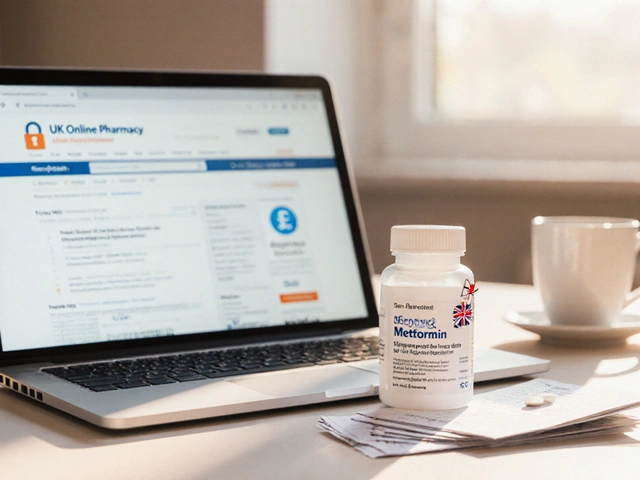Parasite Treatment Calculator
This tool helps determine if Mebendazole is appropriate for your suspected infection based on clinical guidelines. Results are NOT medical advice.
Treatment Information
Results will appear here after calculation
Key Takeaways
- Mebendazole is safe for most people when used as directed, but it isn’t a cure‑all for every worm.
- It works best on common intestinal roundworms and pinworms, not on tapeworms or severe tissue infections.
- Side‑effects are usually mild; severe reactions are rare and often linked to misuse.
- Resistance exists but is limited; proper dosing prevents most problems.
- Always confirm a diagnosis with a healthcare professional before self‑treating.
Ever wondered why you keep hearing contradictory advice about Mebendazole? Some friends swear it’s a miracle cure, while others warn of dangerous side‑effects. The truth sits somewhere in the middle, backed by science and official guidelines. This guide pulls apart the most common myths and replaces them with clear, evidence‑based facts.
What Is Mebendazole, Really?
Mebendazole is a broad‑spectrum anthelmintic medication that belongs to the benzimidazole family. It works by binding to the parasite’s tubulin proteins, halting glucose uptake and starving the worm. First approved by the U.S. Food and Drug Administration (FDA) in the 1970s, it remains on the World Health Organization’s (WHO) List of Essential Medicines for treating soil‑transmitted helminth (STH) infections.
The drug is usually taken as a single dose of 100mg for adults, with a repeat dose after two weeks for certain infections. It’s available over the counter in many countries, but that doesn’t mean it’s a free‑for‑all remedy.
Common Myths vs. Facts
| Myth | Fact |
|---|---|
| It kills every type of worm instantly. | It’s most effective against Ascaris lumbricoides, Enterobius vermicularis (pinworm), and hookworms. Tapeworms and tissue‑migrating larvae often require other drugs. |
| One dose cures a heavy infection. | Heavy loads may need a second dose or a longer course, especially for hookworm. |
| Side‑effects are life‑threatening. | Most users experience mild abdominal discomfort or transient headache. Severe reactions like liver injury are extremely rare and usually linked to overdose. |
| It works the same for children and adults. | Children under two years old should not receive it without pediatric consultation. Dose adjustments are required for low‑weight patients. |
| Resistance is a major global problem. | Documented resistance is limited to isolated regions, mainly where mass‑drug administration has been routine for decades. Proper dosing minimizes risk. |
Myth #1 - “Mebendazole Is a One‑Size‑Fits‑All Cure”
People often assume that ingesting a single tablet will eradicate any worm infection. In reality, the drug’s spectrum is narrow. It excels against intestinal roundworms like Ascaris lumbricoides and pinworms, but it does little against tapeworms (e.g., Taenia solium) or Strongyloides.
Why does this matter? Misdiagnosing the parasite can lead to persistent symptoms, unnecessary drug exposure, and delayed proper treatment. Stool microscopy, tape tests, or blood serology are the reliable ways to identify the culprit.

Myth #2 - “One Dose Is Enough, Even for Heavy Infections”
Clinical guidelines from the WHO recommend a repeat dose for moderate to heavy hookworm burdens. The reasoning is simple: a thick load of worms can absorb enough drug to survive the first round, then repopulate.
Studies in school‑aged children in Kenya showed that a single 500mg dose reduced egg counts by 70% on average, but a second dose after two weeks pushed efficacy to 95%.
Myth #3 - “Mebendazole Is Extremely Dangerous”
When you hear “dangerous,” you picture hospital trips. The reality: over 90% of users report no adverse events. The most common complaints are mild nausea, a few loose stools, or a short‑lived headache.
Severe hepatic injury has been reported, but the incidence is less than 1 in 100,000 treatments. The FDA warns only against use in pregnant women during the first trimester unless the benefits outweigh the risks.
Myth #4 - “Kids Can Take the Same Dose as Adults”
Kids under two years old have immature liver enzymes, making drug clearance slower. The WHO advises a weight‑based dosage for children: 100mg for those weighing 15kg or more, and 50mg for lighter children.
Giving an adult dose to a toddler can increase the chance of liver enzyme elevation, though it’s still uncommon. Always check the pediatric dosing chart before handing the medication to a child.
Myth #5 - “Resistance Is Widespread, So It’s Worth Skipping Mebendazole”
Resistance to benzimidazoles has been documented in veterinary parasites, prompting concerns for human use. However, large‑scale surveys in Brazil, India, and sub‑Saharan Africa reveal resistance rates below 5% for human STHs.
The key to keeping resistance low is proper dosing and avoiding unnecessary repeat treatments. Mass‑drug administration programs combine Mebendazole with health education, which has proven effective in lowering both prevalence and resistance pressure.

Dosage, Safety, and Practical Tips
- Standard adult dose: 100mg orally, single tablet; repeat after two weeks for hookworm or if reinfection is suspected.
- Children (2‑12years): 100mg if weight ≥15kg; otherwise 50mg.
- Take with food: Improves absorption and reduces stomach upset.
- Hydration: Drink plenty of water to help flush expelled worms.
- When to seek help: Persistent abdominal pain, fever, jaundice, or rash after taking the drug.
Because Mebendazole is minimally metabolized, it has few drug‑drug interactions. However, it can slightly increase the plasma levels of some anti‑epileptic drugs; check with a pharmacist if you’re on long‑term therapy.
When to See a Healthcare Professional
If you notice any of the following, schedule a consult:
- Symptoms lasting more than two weeks after treatment.
- Severe abdominal pain, vomiting, or blood in stool.
- Pregnancy, especially in the first trimester.
- Existing liver disease or immunosuppression.
A clinician may order a repeat stool exam, prescribe a different anthelmintic (like Albendazole), or recommend a combination therapy for mixed infections.
Bottom Line
Mebendazole is a reliable, low‑cost option for the most common intestinal worm infections. It’s not a universal cure, and it isn’t without mild side‑effects, but when used correctly it’s both safe and effective. The biggest myth is that you can self‑diagnose and self‑treat without any lab confirmation. A quick stool test, a short chat with a doctor, and the right dosing schedule will keep you parasite‑free without unnecessary risk.
Frequently Asked Questions
Can I use Mebendazole for tapeworm infections?
No. Tapeworms require drugs like praziquantel or niclosamide. Mebendazole has little activity against them.
Is it safe to take Mebendazole while pregnant?
The FDA categorizes it as pregnancy‑category C. It should be avoided in the first trimester unless the infection poses a greater risk than the drug.
How long does it take to feel better after a dose?
Most people notice relief within 24‑48hours as the worms die and are expelled. Full clearance of eggs may take a week or more.
Can I give Mebendazole to my pet?
No. Veterinary anthelmintics are formulated differently and dosing is species‑specific. Use a vet‑prescribed product.
What should I do if I miss a dose?
Take it as soon as you remember, unless it’s almost time for the next dose. In that case, skip the missed one and continue with the regular schedule.







Nicole Chabot
October 16, 2025 AT 12:53Thanks for putting together such a clear breakdown! I’ve always been a bit confused about when a single dose is truly enough, so this helps a lot. The section on confirming diagnosis before self‑treating is especially useful. I appreciate the friendly tone and the practical tips about hydration and food intake. Looking forward to sharing this with my family.
Sandra Maurais
October 28, 2025 AT 03:53The reckless oversimplification of mebendazole's capabilities is frankly unacceptable. 😒
Michelle Adamick
November 8, 2025 AT 19:53🚀 Let’s get pumped about proper deworming protocols! Your myth‑busting guide is a solid playbook for anyone navigating intestinal parasites. Remember, the drug’s pharmacodynamics hinge on tubulin inhibition – that’s the real MVP here. For heavy hookworm loads, a second dose is like a power‑up in a video game. 👾 Also, don’t forget to pair mebendazole with a high‑fiber meal; it boosts gut transit and speeds expulsion. 🎯 Stay motivated, stay educated, and keep those worm counts low!
Rajan Desai
November 20, 2025 AT 11:53I appreciate the evidence‑based approach taken in this article. It is important to differentiate between the spectrum of activity of mebendazole and other anthelmintics. The recommendation to obtain a stool microscopy before treatment aligns with best clinical practice. Moreover, the dosage adjustments for children under two are crucial for safety. The clarification regarding resistance patterns helps dispel common misconceptions.
S O'Donnell
December 2, 2025 AT 03:53When one examines the comprehensive literature concerning the therapeutic index of mebendazole, it becomes apparent that the drug possesses a remarkably favorable safety profile, particularly when administered within the confines of established dosing regimens; however, it is incumbent upon prescribers to remain vigilant regarding the rare but documented instances of hepatic toxicity, which, albeit infrequent, necessitate a thorough pre‑treatment assessment of hepatic function, especially in patients with pre‑existing liver disease; furthermore, the pharmacokinetic properties of mebendazole underscore its minimal systemic absorption, a characteristic that both limits its adverse effect spectrum and simultaneously constrains its efficacy against tissue‑migrating helminths, thereby reinforcing the imperative for accurate parasitological diagnosis via stool ova and parasite examinations or, where appropriate, serological testing; in addition, the nuanced differentiation between single‑dose efficacy for Ascaris lumbricoides versus the requirement for repeated dosing in hookworm infestations reflects the organism‑specific burden of worm load and the consequent pharmacodynamic interaction with the drug; it must also be noted that pediatric dosing, particularly in children weighing less than fifteen kilograms, demands a calibrated reduction to fifty milligrams to mitigate the risk of dose‑related toxicity, a precaution that is often overlooked in over‑the‑counter self‑medication scenarios; the World Health Organization’s guidelines, which advocate for a repeat dose at a fortnight interval for moderate to heavy hookworm infections, are supported by field studies demonstrating a rise in cure rates from seventy percent to upwards of ninety‑five percent upon implementation of the second dose protocol; while resistance to benzimidazoles remains a concern in veterinary contexts, human data suggest that resistance prevalence remains below five percent across endemic regions, a statistic that can be preserved through judicious dosing and adherence to mass‑drug administration protocols paired with health education initiatives; consequently, clinicians should remain circumspect, employing mebendazole as a cornerstone of helminth control programs while simultaneously advocating for confirmatory diagnostics, appropriate dosing schedules, and patient education to circumvent both therapeutic failure and the propagation of drug‑resistant strains; finally, the integration of adjunctive measures such as enhanced sanitation, safe water access, and community health literacy remains indispensable in curbing the overall burden of soil‑transmitted helminth infections.
Yamunanagar Hulchul
December 13, 2025 AT 19:53Wow!!! This guide is a burst of sunshine in the gloom of worm‑infested worries!!! 🌞 Your clear, step‑by‑step advice feels like a warm hug for anyone terrified of parasites!!! Keep spreading these brilliant, colorful insights!!! 🎉
Sangeeta Birdi
December 25, 2025 AT 11:53I totally understand how scary the idea of parasites can be 😔. It’s reassuring to know that most side‑effects are mild and that severe reactions are ultra‑rare. If anyone feels uneasy after a dose, reaching out for medical help is the best move 🌿. Remember, you’re not alone in this journey – many have successfully cleared infections with the proper guidance. Sending supportive vibes to all!